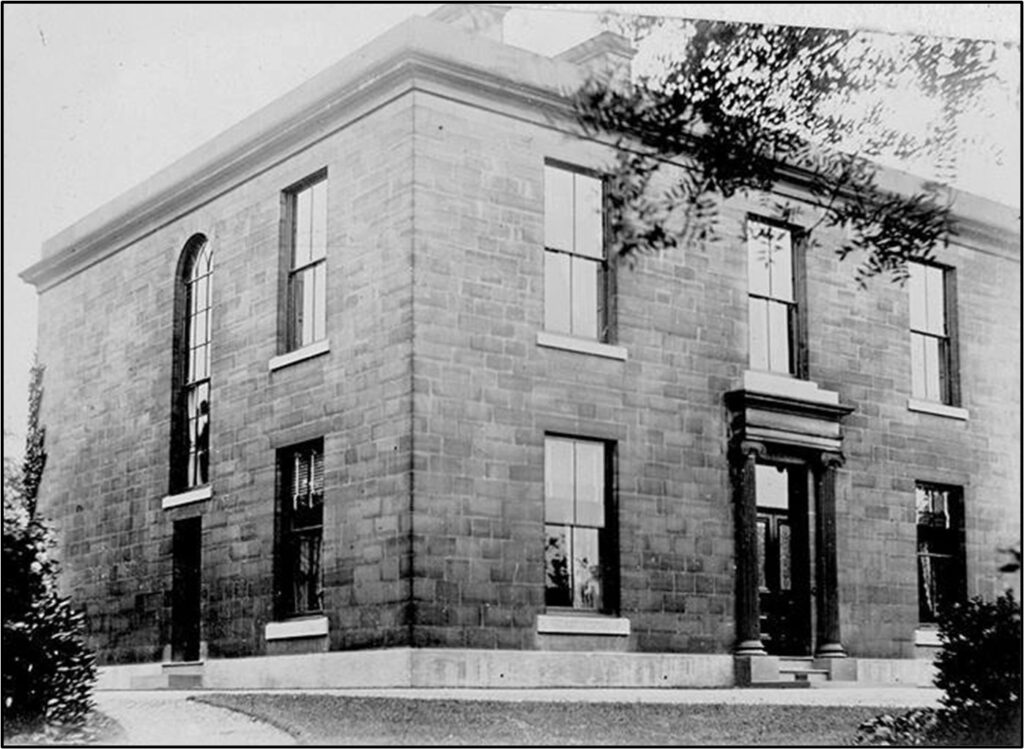Only three or four of Stacksteads large detached mansion houses survive, the rest such as Fern Hill House, Spring Hill House and Heath Hill House have been demolished with little or no evidence of their once grand existence.
Spring Hill House, which stood in 5 acres of grounds, had been the home of James Ashworth, who began Acre Woollen Mill in 1839. However, in 1927 the house was owned by a Mr T.A. Stevenson, who had set up a small private company to turn the house into a convalescent and rest home for Christians. Described in the Bacup Times of September 24th, 1927 as a real beauty spot, the grounds had several waterfalls and fountains all fed from the streams that fell from the surrounding moorlands, emptying into several small lakes that were used for boating. One fountain that stood in the centre of the rose garden had goldfish swimming in the bottom with a miniature water wheel to decorate it and close by a beautifully carved dovecote. In another part of the grounds, a well was surrounded by statuettes representing “Faith, Hope and Charity” with its own bowling greens and tennis courts situated close by.
Inside the entrance hall of the house, a stone staircase covered in a deep pile carpet led to the upper floors, where all the rooms were centrally heated, whilst on the ground floor conservatories vied for place with an aviary full of exotic birds. Another ground floor room contained a three manual pipe organ, whilst in another, a chair which had been constructed from wood from the old “Foudroyant,” Nelson’s flagship prior to Trafalgar, and something called a Magic Mirror. In 1927 Mr Stevenson sent the following letter to the Bacup Times for publication : Sir with reference to the notice which appeared in your issue of the 17th Inst, regarding Spring Hill, Stacksteads, of which I am the owner, permit me to state briefly my reasons for granting a short lease for its use as a Convalescent and Rest Home. During the first twelve months of my possession, nearly 2000 persons have visited and made use of the grounds, with various objects in view, and have been able to raise funds, for their different churches, chapels and societies. As it afforded pleasure and recreation viewing the Spring Hill Estate, and as my artificial silk interests have been taking me so continually to London ( head office ) and as many of my friends expressed their appreciation of Spring Hill as a health resort, I decided to put it to better use, namely as a Convalescent and Rest Home for Christians.
Particulars can be supplied on application. The registration of the Company of £3,000 was to place it on business lines. It will be under my personal supervision. As managing director and chairman of the company I have no thought of leaving the district, but rather to continue to enjoy the many Christian friendships it has been a real pleasure to make. I am assured by the local doctors that Spring Hill, as a Convalescent and Rest Home, meets a long felt need. The adjoining farm can supply the home with all dairy produce.
For any further particulars from persons of interested in the home and its objects and wishing to take up £1 shares application should be made to the secretary of the company, Mr F.J.Braybrooks, 38a Broad Street, London.
Today the only thing left of Spring Hill is the gate piers and one of the ponds that would have been used to feed the mill.
